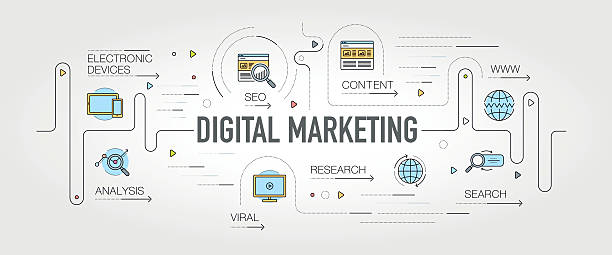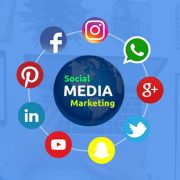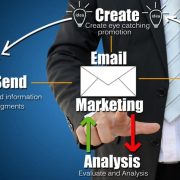Digital marketing refers to companies’ efforts to reach customers via electronic technology. Digital marketing is promoting and selling products or services through online platforms like email, social networking, mobile advertising, online customer communities, webinars, and other video-based content.
Digital marketing uses the same tactics as traditional marketing. Organizations can use both conventional and digital marketing methods as a strategy.
Digital marketing is crucial
Because of the internet’s global reach, digital marketing allows an organization to appeal to a broader audience. It also allows companies to target potential customers most likely to buy their products or services. A company might email past customers to advertise holiday sales or share news about the deals via social media.
There are many online options for organizations to reach customers. These include email, social media, text, and banner ads.
Social media allows individuals to communicate and interact with one another through a single platform. Marketers can also use these platforms to gather insights and share them with customers. As needed, digital marketing strategies can be easily adapted. If the target audience changes venues, changing the communication platform or format is possible.
The complexity of digital marketing is due to the many new communication channels available and the analysis required to understand customers, prospects, and their preferences. To understand customers’ preferences and behavior, organizations use many tools. Organizations can use various tools to understand the customer response to digital marketing efforts, including predictive analytics and extensive data analytics.
Different types of digital marketing
There are many ways digital marketing can be used, including the ones listed below:
Email marketing. Companies email customers and potential customers to promote business practices, such as sales or events.
Social media marketing. Companies use social media marketing platforms like Facebook, Twitter, and Pinterest to communicate with their customers and potential customers. They notify them of new deals or updates and share and build social trust.
Pay-per-click (PPC) advertising allows organizations to advertise on various websites using paid ads. A banner ad is an example of such an advertisement. These ads can be targeted based on user characteristics such as age, gender, or location if enough data or cookies have been collected. Every time a user clicks on an ad, the advertiser is paid.
Content marketing. This strategy uses content to reach customers. A website is a collection of content that an organization publishes to promote it via other marketing channels, such as email or social media.
Sponsored content. A company pays another business to promote and create content that highlights the product or service of the marketer.
Affiliate marketing. An organization pays a commission on a platform to promote its product/service.
Short message service (SMS) marketing. Organizations may choose to use SMS to send customers promotions. As part of their campaigning, candidates for office often send SMS messages.
Digital marketing has become more critical as companies seek to reach wider audiences and connect customer behavior with new sales. Marketing automation tracks visitor behavior and targets potential customers to sell products or services.
Inbound marketing vs. digital marketing
Inbound Marketing focuses on attracting customers through company-created web content. Inbound marketing aims to attract customers rather than have marketers compete.
Here are some examples of inbound marketing content or tactics:
Digital marketing does not distinguish between outbound and inbound marketing. This is the difference between inbound marketing and digital marketing. Digital marketing can be used to describe all marketing that includes digital outreach.
Inbound marketing targets customers via online search engines or social media platforms. It is designed to create content that appears in these places to drive organic visitors to an organization’s site.
Outbound marketing can reach a larger audience, but it can also cause distress for uninterested customers. Although inbound marketing is intended to get interested prospects via audience segmentation, it can also reach fewer customers due to its nature.
Retention of customers is another vital tool. Customers will be more attentive if there is regular communication with them.
B2B vs. B2C digital marketing
Digital marketing from business-to-business ( B2B ) is about online lead generation. The goal is for an organization to find another business to buy its product or services.
Digital marketing (B2C ) focuses on attracting people and making them customers. B2C digital marketing focuses more on creating a faster buyer’s journey for customers.
B2B clients are more likely to make longer decisions because they require multiple inputs. B2C customers, on the other side, need only their information and may make buying decisions based on emotions or mood. B2C customers may also be more responsive to social media marketing, and the short-term offers and deals included in digital email marketing.
Digital marketing benefits
Digital marketing offers the following benefits:
Local and global reach. People can see the same advertisement in different time zones around the world. Local ad visibility can also be improved by digital marketing. Organizations can personalize their ads locally.
They are targeting specific customers. Companies can keep in touch with their customers and prospects through email or social media. Organizations can then communicate with them or test offers to gain insight.
Cost-effectiveness. The cost of digital marketing is lower than traditional marketing methods like TV spots. Promoting via email campaigns or social media is almost free.
Customized channels. Different digital marketing channels can be used depending on the company and the platform. An organization’s marketing teams can identify their most potent and most effective forms of marketing and adapt them as necessary.
Digital marketing challenges
However, digital marketing faces the following challenges:
It’s time-consuming. Companies must constantly create content and optimize marketing campaigns.
Competitive. This happens when potential customers are bombarded with too many ads. It can be difficult for marketers to make their brands stand apart.
Data privacy. An organization can use an individual’s data to target them with advertising. It should understand how to manage that data and comply with privacy laws.
Technology. Digital marketers must ensure that websites are optimized for mobile users to speed up the prospect’s journey from learning more about an organization to purchasing.




















Comments